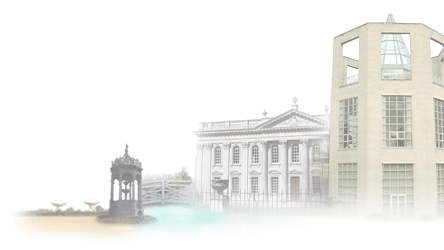A Cambridge perspective
on the digital world



May 2001
Put simply, e-commerce is the marriage of commerce and the Internet. But neither commerce nor the Internet are simple. "e-commerce" is in reality several distinct and different things, which together are changing the way business is done in some very fundamental ways.
The roots of e-commerce date back to long before the Internet. Large companies such as Ford saw the opportunity to automate many of the paper systems they used for dealing with suppliers (invoices, despatch notes etc). By making them electronic, they could save both time and money; thus EDI (Electronic Data Interchange) was born. EDI systems tend to be designed for particular industries, and those that have been successful have usually been driven by a single large supplier, dominant in their sector.
Meanwhile, companies of all sizes have been automating their internal systems, including the back office. This turns out to be critically important for e-commerce as a whole. The back office is largely invisible outside the company; but without effective digital back office systems, it is virtually impossible for any company to implement either EDI or the newer forms of e-commerce.
Doc Martens, footwear trendsetter for a generation, recently decided to delay its e-commerce implementation because its back office systems cannot take the strain. The message is clear: you have to put your own house in order before you can venture out onto the Web.
After several years of EDI initiatives, with mixed success, the emergence of the Internet drove everything into higher gear. The Internet has affected every area of commerce, but it is the ability to purchase goods through the Web that has attracted the most attention. This aspect of e-commerce, christened B2C or Business-to-Consumer, is the online version of the retail store.
The most familiar B2C businesses are Internet 'pure plays' set up solely to work on the Net, such as Amazon and lastminute.com. These companies are investing heavily to build market share, believing that it is more important to become dominant in their sector than to be profitable now. Having seen off the competition (the theory goes), they can then turn their attention to profitability. But investor's patience is a fickle thing: the dot.com crash came about because investors stopped believing in many companies' unsupported predictions of 'jam tomorrow'.
Meanwhile established businesses of all kinds have been quietly adding online shopping carts to their more conventional retail presence: the so-called 'clicks and mortar' approach. 'Clicks and mortar' B2C is clearly here to stay; 'pure' B2C will also survive, but (for the time being at least) in a much reduced form compared with earlier predictions. One area where pure B2C is gaining ground is in banking and finance, where the cost advantages are enormous.
It was the get-rich-quick B2C goldrush that caught media attention, together with the serious morning-after headache which many investors were left with after the crash. But it is the slower and less dramatic progress of B2B - Business-to-Business - trading where most analysts expect the Internet to have its greatest effect.
Will the new generation of B2B portals take over the role of more conventional markets? Will global networks of small and medium sized organisations prove more efficient than the giant mega-corporations that have so far dominated the industrial scene? Unquestionably, online B2B processes are more efficient, but the shape of the B2B landscape is still evolving, and in practice it will work out differently in different sectors.
The details vary from sector to sector, but it is clear that companies which are not developing a B2B strategy appropriate to their business and their industry risk consigning themselves prematurely to the economic dustbin.
What is XML? eXtensible Markup Language is related to HTML, the universal language of the Web. Unlike HTML, XML describes the structure of information, not just its appearance on the page. A number in an XML document, for example, can be tagged to show that it is an order price, rather than just a figure in a specific position on the page. XML documents can be produced and interpreted by automatic systems, without human intervention.
XML is an enormously powerful language that allows companies to exchange information about almost anything. But of course, in order for one organisation to read another's information, there has to be agreement about what the elements are and what they should be called. Enormous efforts are being made to standardise XML descriptions in every industry. Human beings and organisations being what they are, this is not an easy process. But XML is emerging as a vital element of 21st Century e-commerce.
For more years than most people care to remember, the PC has dominated thinking about IT. But it is now clear that there are other ways of accessing the Internet - and of engaging in e-commerce. Mobile commerce, or m-commerce, uses mobile devices such as wireless-connected PDAs or smart phones.
More than just a simple add-on to e-commerce, m-commerce promises an entirely different type of relationship with customers, with a 24-hour, 7-day personalised connection to individuals. m-commerce is still in its infancy, and take-up has been variable: WAP in Europe has proved disappointing, but for a number of reasons (see April's View), i-mode in Japan has been spectacularly successful. All eyes are on the next generation of mobile technology, in which billions have been invested worldwide.
The structure and technology of e-commerce is now being defined, and British companies are playing a key role in this. From software packages for developing online stores to 3D visualisation, security products, enabling technology and multi-currency payment systems, leading edge companies are defining key aspects of the e-commerce future.
Mediation Technology has been commissioned by the Department of Trade and Industry to build a database of e-commerce technology in the UK with global application.
©2001 Mediation Technology
